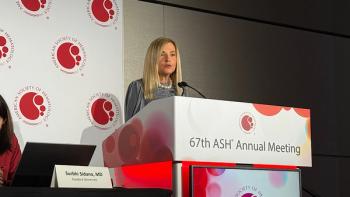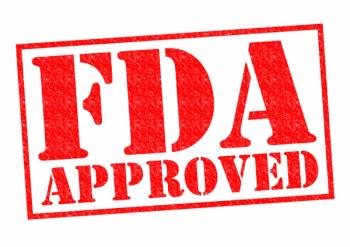
Cancer Drugs Driving 340B Growth Even More Than Understood, Report Finds
The report, commissioned by the Community Oncology Alliance, finds that Medicare Part B cancer drug spending rose 123% in 340B hospitals from 2010 to 2013, but only 31% in non-340B hospitals; it fell 5% in community practices in the same period.
The discount drug program intended for safety-net hospitals and special AIDS clinics has mushroomed even more than earlier reports have suggested, with oncology drugs fueling much of the growth, according to a new report commissioned by community oncology providers.
An examination of Medicare Part B hospital outpatient spending shows that 340B institutions accounted for 58% of all spending on drug payments in 2013, with oncology drugs making up 40% of the Medicare fee-for-service costs. The study, by Aaron Vandervelde of the Berkeley Research Group of Washington, DC, was sponsored by the Community Oncology Alliance (COA), which has sounded the alarm about unrestrained 340B growth in recent years.
Figures from 2010 through 2013 reveal explosive growth in cancer drug spending in the 340B sector: Medicare Part B reimbursement rose 123% for oncology drugs in this period, compared with 31% for non-340B hospitals and a 5% decrease for community oncology practices. Medicaid expansion may only exacerbate these trends if there are no changes to the program, according to the report.
Cancer drugs have become “the pot of gold at the end of the rainbow,” for 340B hospitals, said Ted Okon, executive director of COA. Okon said the report underscores 2 key problems: it’s too easy for hospitals to qualify for the program, and hospitals have powerful financial incentives to buy up oncology practices, so these financial strategies can proliferative at sites beyond the hospital walls.
The original purpose of 340B was noble: hospitals caring for patients who may be uninsured or underinsured can buy drugs at discounts of 20% to 50% but charge full price to those able to pay, or to their insurer, which can include Medicare or Medicaid. But if this practice extends to oncology practices owned by the hospital, the ability to buy discounted drugs and charge insurers a higher price does many things at once:
- First, it forces independent oncology practices to compete with hospital-owned providers when they lack access to similar discounts; many are compelled to either join with the hospital or go out of business.
- Second, Okon explained, the ever-increasing pool of providers buying “discounted” drugs means those rebates have to be built into the overall price, which has contributed to trends in oncology costs seen today.
“Already, 340B expansion has had unintended consequences,” Okon said. “Anyone who doesn’t think all these rebates are not fueling drug prices is not paying attention.”
While a
What’s more, spending on cancer drugs appears to be a business strategy among the 340B hospitals; left unchecked, this will only encourage more program growth, with consequences for all payers, Medicare and Medicaid, and patients who will face a combination of higher copayments and fewer care options in their communities.
The report stated, “Oncology drug reimbursement has increased by 86% at continuously enrolled 340B hospitals and 58% at non-340B hospitals. Although some of this growth is a function of changing demographics and advancements in chemotherapy (which typically come with an increased cost), the disparity in growth rates between 340B and non-340B hospitals speaks to the disproportionate role that 340B hospitals play in the acquisition of community oncology practices.”
“This is, in large part,” the report concluded, “a function of the sizeable profits that 340B hospitals realize on Medicare and commercial reimbursement of oncology drugs.”
Among the findings:
- The 340B program grows each year. In 2010, there were 89 new hospitals enrolled classified as “Disproportionate Share,” or DSH, along with 342 non-DSH. A hospital’s DSH status is calculated based on whether patients qualify for Medicare Part A, Medicaid or Supplemental Security Income. The number of new enrollees rose each until 2014 brought 324 new DSH enrollees and 1222 non-DSH.
- The report found that new enrollees—those arriving in 2010 or later—accounted for 23% of Medicare Part B outpatient drug spending in 2013.
- Medicare spending in 2013 on oncology drugs in 340B hospitals outpaced that of non-340B hospitals, $3.064 billion to $2.672 billion, even though overall hospital revenues are higher among the non-340B hospitals, $1.968 trillion vs $1.411 trillion for 340B.
- The gap in spending per-beneficiary in Medicare Part B FFS for oncology drugs between 340B hospitals and community oncology practices is large and growing: in 2010, 340B hospitals spent $1722 per patient per day, while community practices spent $1226. In 2013, the per-patient, per-day figure had grown to $1920 for 340B hospitals but barely budged for community practices, to $1266, at a time when the cost of cancer drugs is soaring.
The report confirms the overall conclusions of the GAO findings. The agency said, “While it is not unlawful for hospitals to benefit financially from the drug discount program," the report said, such practices are “not consistent with the legislative intent of the 340B program.” It noted that taxpayers generally and patients individually suffer harm, since Medicare Part B beneficiaries are responsible for 20% copayment, which will rise along with drug prices.
That report also questioned whether all healthcare provided in 340B hospitals is appropriate, and states, “Absent a change in financial incentives, potentially inappropriate spending on drugs may continue.”
Today’s report comes as the
“The 340B program is very administratively complex and costly to administer now,” Beth Feldpush, senior vice president of advocacy and policy for America’s Essential Hospitals said when the guidance was issued. “For our members that rely on the savings, I could see where if HRSA narrowed the program so much, a hospital could say the costs to run this program may outweigh (the benefit of) participation in it.”
Comment on the guidance continues through October 27, 2015.
AJMC staff Surabhi Dangi-Garimella, PhD, contributed to this report.
Newsletter
Stay ahead of policy, cost, and value—subscribe to AJMC for expert insights at the intersection of clinical care and health economics.









































